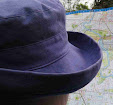Local AIF volunteer, George Gilchrist, of St Leonards Rd, Ascot Vale, survived the landing at Gallipoli with the 7th Infantry Battalion on 25 April 1915.
Gilchrist was 19 when he enlisted, and worked as a clerk. He'd been involved in the cadet movement for some years, spending one year as a junior cadet, 2 years in senior cadets, and 15 months in the Citizens Military Forces with the 58 Infantry (Essendon Rifles). As compulsory military service had only been implemented in 1913, his years as a cadet before that would have been as a volunteer cadet, possibly training at school, indicating his early interest in soldiering. This was one reason he would have been an early appointment to Lance Corporal, and Sergeant while still at Gallipoli.
Gilchrist was mentioned several times in extracts of letters published in the Essendon Gazette, and following are extracts from letters he wrote himself to his parents:
Sergeant George A. Gilchrist writes to his parents at Moonee Ponds from "Rabbit Hole Villa," Gallipoli, describing the landing of the Australians at Gallipoli. Out of 35 in his boat only 15 got ashore. They rushed across the beach, and took cover, and connecting with another battalion rushed a small hill and took possession. They remained in the discarded trenches for a while, until they started off to regain the firing line which was well inland. Unable to do this, they retired. They rejoined the battalion later on. Alick MacArthur was one of those killed on the boat. He was rowing, and was shot through the thigh; but kept on pulling till he dropped from loss of blood.
In a later epistle, Sergt. Gilchrist tells of the trip to Cape Hellas with a party of New Zealanders. Here they spent a couple of days in the reserve trenches. It was very cold, and they went to bed looking like Esquimaux. On 5th May, they moved into trenches about 1000 yards from the enemy, and about 500 yards from a trench held by British troops. When word came, they jumped out of the trenches and went for the enemy. No. 5 platoon, under Lieut. Swift, was the first to move, and just as the Australians got to the top of the gully, the Turks poured shrapnel into them. Lieut. Swift was hit here and slightly wounded. (His brother, Alick, has since been killed in action.-Editor.) They- reached the trench held by the British, and advanced. The enemy had the range to a nicety, and their firing was very accurate. The boys got within 35 yds. of the Turks, and owing to the firing line having been thinned, they lay down and scratched up a bit of cover, without entrenching tools. They dug all night, and by morning were safe from anything but high explosive shells.
Sgt. Gilchrist had several narrow escapes. A shrapnel pellet landed in his pack, and while digging he had four other close shaves. At time of writing, he was all right; but complained of the heat, and flies, especially the latter.
OUR SOLDIERS. (1915, October 14). The Essendon Gazette and Keilor, Bulla and Broadmeadows Reporter (Moonee Ponds, Vic. : 1914 - 1918), p. 4 Edition: Morning. http://nla.gov.au/nla.news-article74590395
For more stories of local volunteers, see: The Empire Called and I Answered: the Volunteers of Essendon and Flemington, 1914-1918













No comments:
Post a Comment